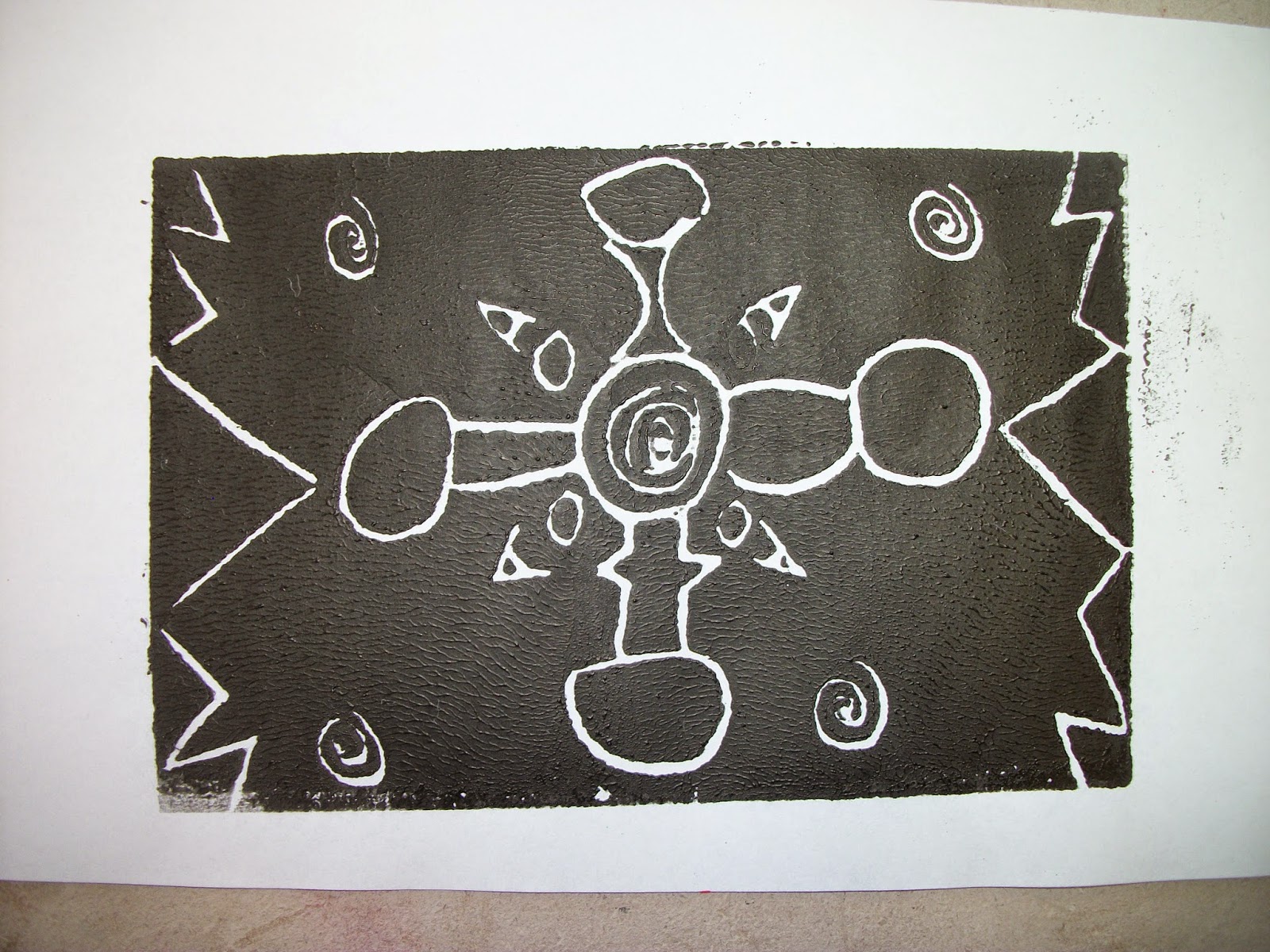 |
| Brayer Party |
Printmaking is always available in our studio, but to drum up business, I set up our spare table in an inviting "Art Trap" (and then I wait for artists to fall into it.) The table space is divided in half: "Ink Side" & "Clean Side." Artists ink up at the left, and then carry their inked printing plate to the right side, wipe fingers, choose paper, and use either a baren or the etching press to apply pressure before pulling their print.
 | |
| The main attraction at the printmaking center may be this Charles Brand press left in my care when my brother up and moved to Japan |
 | |||||
| First try by "A," Grade 5 |
And students find out that a lot can go wrong! Some years ago a helpful student gave me this sign(photo below) to help others avoid the common pitfalls printmakers encounter - it now lives in the Printmaking Center in the studio
 | |
| "What Went Wrong?" sign by "MM" many years ago! |





